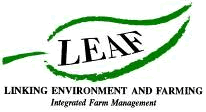
In the soup!
with Liz Nottage
I work on a farm in Duxford in South Cambridgeshire, which grows a range of premium vegetables. We like to run fun, ‘hands on’, active visits that give people a sense of achievement as well as having new experiences and learning something about farming.
Sharing food
We welcome our visitors with a taste of soup made with vegetables grown on our farm. It’s a fantastic way to make the connection between what we see in the field and the food that we eat. It’s lovely to see them enjoying the soup and by the time they go home they want to have a go themselves. They certainly know more about their food and how it is grown.
The easiest way to serve the soup is in cups with homemade bread for dipping. While everyone is quietly enjoying their cup I talk about what is in the soup and explain that most of the vegetables in the soup are grown on the farm so this is probably the freshest soup they have ever tasted!
Then we explore the ingredients that all contribute to making soup. Before the visit I collect a few things for people to handle and take a closer look at. I usually start with a tin or carton of soup and work back to the field. I talk about potatoes and all the different ways we eat them. Everyone loves potatoes in one form or other and I ask the group their favourite ways of eating potatoes – usually it’s chips! I show them some muddy potatoes and parsnips straight from the field as well as clean ones in supermarket packaging and I also have a bag of chips and crisps so they are aware of the difference between potatoes from the field and processed potatoes.
Going shopping
I give each member of the group a ‘shopping list’ of ingredients for the soup using pictures that make everything clear and easy to understand. Then, depending on the season, we take the group on a tractor and trailer ride to see vegetables either being planted or harvested in the field. If we have an active group then we climb across the beds to watch the planters or harvester at work – it gets the group moving about and enjoying being outside. If they are up for getting their hands dirty we let them shake the mud off the freshly dug vegetables to bring them closer to the soil that is so important and to complete the journey from soup can to soil.
I try to encourage the group to ask questions and lead our discussions. We talk about when we plant the different vegetables, the conditions they need to grow, and how we look after our crops. We explore how nature works to make healthy soil and crops, the worms, sunshine and rain, but also how some insects are pests that like to eat potatoes just as much as we all do, but they like them raw, not fried.
Then we take the group into the vegetable store to feel the temperature and see how dark it is. We explain why we store vegetables like this – people can imagine that the inside of the store is just like being inside their fridge at home once the door is shut and the light goes out. They can then collect the ingredients on their list, choosing their own potatoes, collecting onions from the onion store. We explain how most of the onions have left the farm to be stored and packed elsewhere and could well end up in their local supermarket.Before they leave we give everyone a recipe sheet and encourage them to have a go themselves when they get home with the vegetables they have collected. In this way they can continue the visit after they have left and they can share their experiences with their friends or families. Hopefully they’ll think a little bit about us and our farm when they are eating their soup!
Adapting our visit
Including taste in our visit is a powerful way of creating a strong memory and beginning with a common food makes a great starting point. Exploring different foods, how they look, feel and smell and then collecting the ingredients for a recipe is an activity that can also be run indoors if a group is not able to get out into the field or go on a trailer ride and the store rooms on a farm is a sensory rich environment that people rarely get the opportunity to explore. Our older visitors will have their own favourite soups and probably their own recipes and stories about growing their own vegetables.

